
The Land of Look Behind: Precious, But Threatened
November 5th, 2014
In the early 1980s I saw a German documentary film called “In the Land of Look Behind.” It opens with a resident of Quickstep showing us an example of the biodiversity of the area – the tiny frog that lays her eggs in the wild pine, which holds rainwater. He then speaks about the need for development in the area, and jobs. It is a rambling film, moving into conversations with Rastafarians, footage of Bob Marley’s funeral, and so on. What fascinated me, though, were the dreamlike sequences of the Cockpit Country – the hillsides, the mountains darkening at dusk, the lush foliage – and the people. (Note: Look Behind is a district, apparently so named because nervous British soldiers would ride through there back to back on a horse – one looking ahead, one behind – watching out for attacks by the Maroons).
That film was released in 1982 – in many ways, perhaps, a quieter time. Now we are in the twenty-first century, the environment (and the people) are under greater pressure than ever before. And our precious Cockpit Country is no exception. It is threatened by mining (bauxite and limestone quarrying), deforestation (for housing and other developments, and also coal burning) and pollution. And we must include climate change in all our thinking, these days. The threats come from several quarters.
The Windsor Research Centre (WRC) in Sherwood Content, Trelawny (yes, the former home of our sprint champion Usain Bolt) conducts and disseminates scientific research – for example, tracking birds, bats, snakes and other animals (one particular baldpate has a satellite tracker attached; these birds are strong flyers and may actually commute among our islands). You can find the WRC on Facebook and on www.cockpitcountry.com. Both sites are packed with up to date information – the website even has a useful page on Ebola and wildlife (especially bats) which has been a topic of concern, here: http://www.cockpitcountry.com/batsEbola.html
Yes. I used the word “precious” to describe Cockpit Country, and there are so many reasons why it is just that. Shall I mention a few?
Water: 40% of Jamaica’s clean, fresh water originates in Cockpit Country (and did you know that all rain water is actually recycled, by the way? There is no “new” water on this planet). Jamaica’s two largest rivers (Black River and Great River plus four others, including the Martha Brae River which feeds into Glistening Waters near Falmouth) have their source in Cockpit Country. Well over half a million Jamaicans, as well as the many thousands who visit our north coast resorts, depend on its water. With its extraordinary limestone karst landscape, Cockpit Country is a deep reservoir for nearly half the island. And after the recent long drought, I think we all know how precious water is. The forests, soils and limestone help to stabilize Jamaica’s water cycle. They attract, filter and release rain water regularly and gently, mitigating the effects of climate change.
Flora and fauna: Cockpit Country has many medicinal plants. There are roughly 900 varieties of plants in the area – at least 300 of them endemic to Jamaica, and 71 endemic to the Cockpit Country itself. In other words, many varieties of plants (some probably waiting to be discovered) only live in Cockpit Country; some only live on a hillside, and nowhere else on earth. What an amazing thought. It is a treasure trove, and scientists like Dr. André Lamm (head of the research division of the University of Technology’s Centre for Science-based Research, Entrepreneurship and Continuing Studies) are conducting research into medicinal properties of the plants there. There are an estimated 7,500 – 9,500 pairs of Black-billed Parrots left in Cockpit Country, and very few anywhere else in Jamaica. The bird is listed as “Vulnerable” on the International Union for the Conservation of Nature’s (IUCN) Red List, because of the small area in which it lives. And the area is home to 95 of the 119 butterflies in Jamaica – including the Giant Swallowtail, the largest butterfly in our region.
But Cockpit Country is much more than a place for academics to study the incredible biodiversity of the area (and they do come, from near and far, because they know it is a special place). There is history. There is culture. There are people. It is a place where many generations of small farmers and their families have made a livelihood. It is a place steeped in the history of the Leeward Maroons, who fought and defeated the British. It is the land of Captain Cudjoe (as in Kojo Town), with names like Cuffie Ridge and Quashie River. Accompong is an important center of Maroon culture, where eco-tourism and cultural tourism flourishes.
Now, there have been public consultations on the Cockpit Country. More than one map exists, seeking to establish the “boundaries” of the area. The WRC is a member of the Cockpit Country Stakeholders Group and recognizes the boundaries the group has established. Why is this issue so vitally important? Bauxite mining and limestone quarrying companies are interested. Mining is the one activity that is entirely and irreparably destructive to the environment, as we should know. And there is limestone all over the island, so why set your sights on this unique area, the largest area of wet limestone forest in Jamaica? Moreover, housing and other developments threaten to encroach on the area, putting pressure on the area’s rich natural resources – including deforestation.
The people of Cockpit Country – including the Maroons – feel strongly about the possibility of bauxite mining, and the nibbling away at the edges of Cockpit. At public consultations, they expressed their vehement opposition to it. It will mean the end of their way of life. According to the WRC, the Jamaica Bauxite Institute has greatly overestimated the size and value of bauxite deposits there. You can read their letter to the Gleaner explaining this here: http://jamaica-gleaner.com/gleaner/20141031/cleisure/cleisure3.html The letter points to a recent study by Jamaican economist Dr Peter Edwards, which estimates the non-market value of Cockpit Country at US$29.8 million – $47.8 million per year and growing, with a carbon sequestration value (an important factor to mitigate carbon emissions that create global warming) at US$10.4 million per year. This does not include the value of water, medicinal plants and so on.
So, the environment – and Cockpit Country – is fragile, precious, and it does have a value, in actual dollar terms. But most importantly, let us also look at its spiritual value; we humans are not separate and apart from our environment. We are a part of it. We know this instinctively, every time we enjoy a day at the beach or a hike in the mountains. And in this uncertain world of rising temperatures, storms and drought, we should also be more concerned than ever about its importance for the spiritual and physical health of future generations of Jamaicans.
If you visit there, you will see exactly what I mean. Visit soon.
P.S. Cliff Hughes will be interviewing Hugh Dixon, head of the Southern Trelawny Environmental Protection Agency, on the topic of bauxite mining in his weekly radio series “Cockpit Country is our Home” on Power 106 FM. Tune in this Wednesday, November 5 and every Wednesday at 12:35 p.m. for this important discussion!

Cliff Hughes in the Power 106 FM studio with his first guest to talk about Cockpit Country, Kimberly John, Science Manager of The Nature Conservancy.
The Gleaner reserves the right not to publish comments that may be deemed libelous, derogatory or indecent.
To respond to The Gleaner please use the feedback form.
3 Responses to “The Land of Look Behind: Precious, But Threatened”
- We Are the Zoomers
- Living Online with Humans and Birds: NAOC 2020
- Human Trafficking and the Problem of Public Education
- Down Memory Lane
- Are We Ready to Recover from COVID-19?
- Road Safety Matters: Is Your Vehicle Safe?
- Sexual Harassment, Me Too, and the Minister’s Disturbing Giggle
- The Vulnerable Senior Citizens, Private Care Homes and COVID-19
- A Muddle Over Masks
- Here is Something Life-Saving You Can Do: Give Blood!

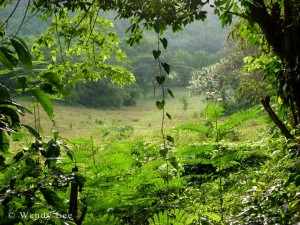
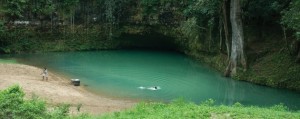
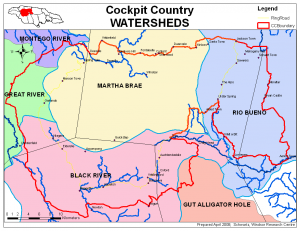
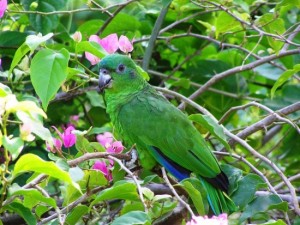
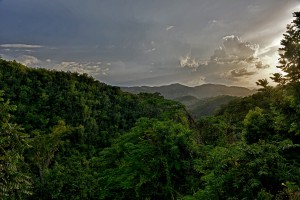


[…] Please do read my latest post on the Gleaner Blogs page. It is about our imperiled Cockpit Country. Here is the link: http://gleanerblogs.com/socialimpact/?p=2310 […]
Thanks for this excellent post, Emma! You catch the beauty, wealth, value and heritage of the Cockpit Country! To think that some would consider destroying this with mining is frightening. Please keep tracking this issue!
Thank you so much, Susan. There is so much more to say. But I tried to at least give an idea of the riches that are there. Yes, you can be sure I will continue tracking this. Thank you for your comment!